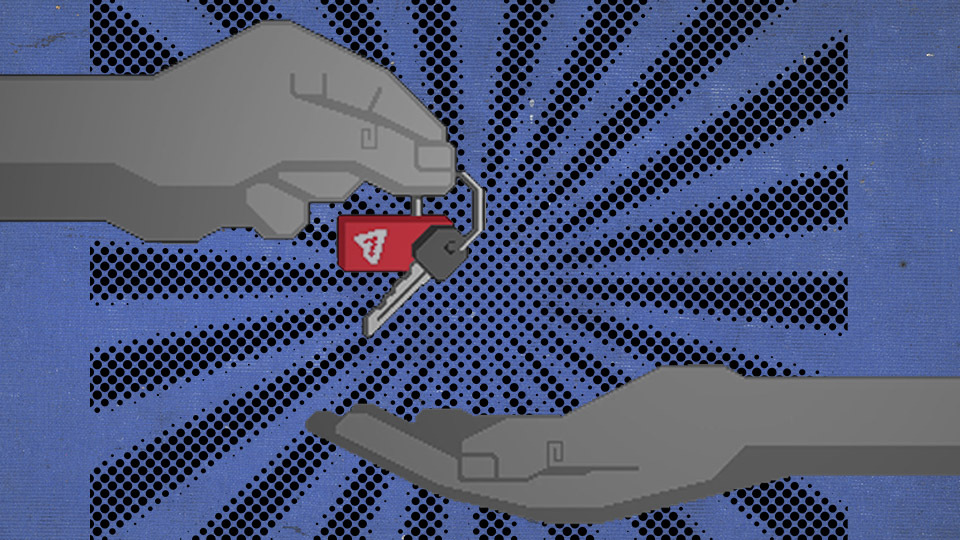
The gaming industry is one of the most essential parts of the overall tech world mainly because of the vital role it plays in culture, entertainment, and technology advancement.
For instance, the gaming industry has witnessed some of the most advanced technology improvements ranging from facial & voice recognition, high definition display, Gesture control, Augmented Reality, Virtual Reality, wearable gaming consoles, and many more.
Bridging Gaming And NFTs
Despite its openness to technological innovation, the gaming industry has been observed as quite conservative when it comes to the broad adoption of emerging blockchain technology.
Sponsored
Currently, only a few games are built on blockchain technology, accounting for less than 0.1 percent of the over 1.18 million game titles reported by gamingshift.
Hoard Exchange – a blockchain project – wants to bridge the gap between NFTs and the regular gaming industry. Since its creation in 2016, Hoard has evolved to accommodate a variety of products aimed at the gaming sector.
The term “regular” in this instance refers to the vast majority of game titles that have yet to incorporate or integrate blockchain technology in any form.
Sponsored
In an exclusive interview with DailyCoin, Radoslaw Zagorowicz, the CEO at Hoard, discussed the company’s approach to bridging the gap between blockchain technology i.e, NFTs (Non-fungible Tokens) and the regular game industry.
Focusing On The Low Adoption Gap
Primarily, Hoard Exchange facilitates 3 major blockchain activities including true ownership of virtual content for gamers; a new model of game financing (GameFi) for developers, and; the development of a virtual goods marketplace and new opportunities for ‘virtual employment.’
Speaking on the company’s approach to bridging the gap left by low blockchain adoption in the gaming sector, Zagorowicz stated that they are focused mainly on implementing tools for game developers to easily integrate with the blockchain space and to implement a marketplace, which allows game developers, who already have their in-game items on the blockchain to easily exchange them for other valuables including cryptocurrency.
According to Zagorowicz, Hoard will function as an API (Application Programming Interface), which can be integrated into existing games. This provides an infrastructure to store and exchange in-game items i.e, NFTs (Non-fungible Tokens).
Aimed To Benefit Both Developers And Gamers
Prior to the inception of blockchain technology which has been instrumental to decentralized exchanges, the gaming industry has had to lose a large chunk of its revenue to intermediaries.
For context, IDG consulting reported in 2017 that more than USD$80 billion of the gaming industry’s total revenue of $103 billion was spent on virtual goods i.e, in-game items, subscriptions, and so on.
Similarly, Statista reported that in-game consumer spending accounts for the biggest share of the video gaming market. Specifically, in 2020, the report indicates that global gaming audiences spent approximately $54 billion on additional in-game content.
By deducting 5 to 10% of these values as gateway costs, one might then estimate how much money would have been spent on transaction fees over the years.
According to Zagorowicz, by integrating Hoard’s blockchain solution on a regular gaming platform, both the gaming firm and gamers stand to benefit greatly.
For instance, the game developers are able to maximize their profit, while individual gamers have unlimited access to a new level of gaming experience.
“By providing infrastructure for game developers to tokenize all aspects of their games on a blockchain, Hoard will enable gamers to finally own the items they pay real money for. They can buy, sell and even rent out their virtual possessions at will, inside and outside of the Hoard marketplace. Additionally, the Hoard platform offers an alternative way of crowdfunding games by inviting funders to contribute in return for valuable virtual items and allowing them to participate in the economies of the games,”
Zagorowicz explained.
Enabling Seamless Interoperability
Zagorowicz went on to mention other advantages of developers integrating blockchain technology. This time around, he dwelled on how blockchain can enable seamless interoperability among different studios.
“By integrating blockchain, you have an opportunity to build interaction between different games, from different studios. For example, if a player has an in-game item stored on the Ethereum blockchain in one game application, the in-game item becomes accessible in another game that supports similar features,”
Zagorowicz said.
Currently, Hoard is primarily focused on the Polish developers who make up the highest percentage of its present market population and have integrated with some of the biggest blockchain games that are already existent.
However, the short-term plan is to “integrate two to three regular games by Polish developers in the coming year.”
Convincing The Conservative Audience
The gaming industry, although open to innovation, is very conservative when it comes to the subject of blockchain adoption.
According to Zagorowicz, one of the most difficult parts of their project is “to convince game developers that blockchain is something that will add additional value as well as an overall new gaming experience.”
So far, Hoard Exchange has been able to identify two major reasons for the industry’s conservative approach toward blockchain adoption. One has to do with the concern towards some limitations posed by the emerging technology, specifically issues relating to scalability.
The second reason, on the other hand, relates to the differences in “how transactions work on blockchain.” Zagorowicz says, most developers will have to adjust to a new reality;
“For instance, if the developers are going to use the main Ethereum blockchain, they must be aware of such things as the cost of the transaction which can either be high or low depending on the latency (speed) of transaction and how individuals can decide to switch between the different gas fees (transaction cost).”
On The Flipside
- Preparing blockchain to be able to support the requirements of the gaming industry could be quite challenging.
- The process of the transaction on the blockchain, although relatively cost-effective, is not the same as what is currently applicable, which on the other hand is more straightforward.
- Convincing game developers to incorporate blockchain technology is not a walk in the park, making the journey to mass adoption a very slow one.
Why You Should Care?
The gaming industry is taking a dynamic turn with the inception of such things as game finance (GameFi), as well as the interoperable nature of blockchain. As a result, developers that do not respond promptly, risk missing out on the early-stage benefits of what may become the game industry’s biggest breakthrough.
Watch the full interview here:
